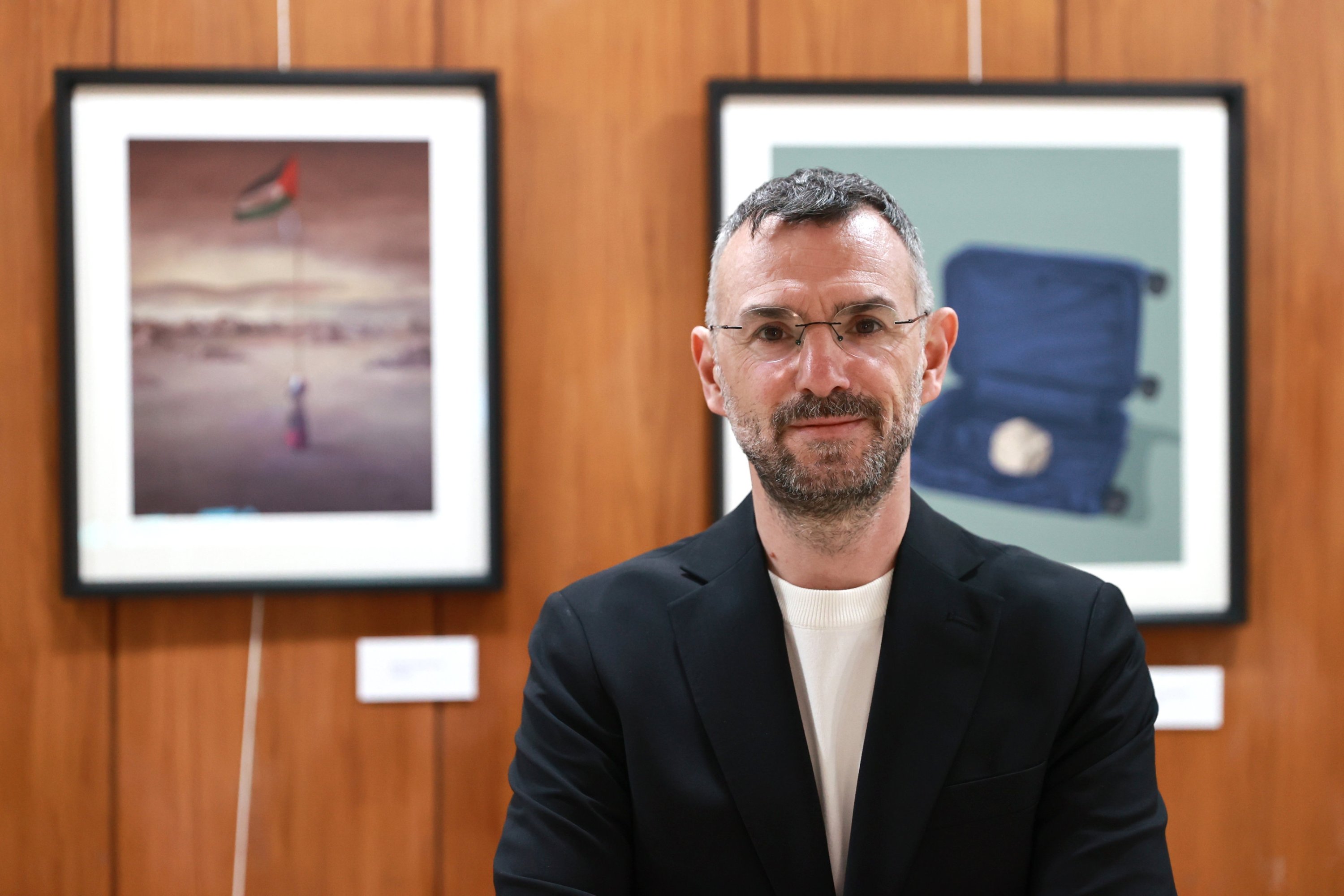© Turkuvaz Haberleşme ve Yayıncılık 2025
This year, the Türkiye Culture Route Festival is not just a celebration of cultural heritage – it’s a living, breathing platform of resistance and memory. Across various cities, the festival is hosting "I’m Still Alive," a contemporary art exhibition curated by Samed Karagöz, that brings together the powerful voices of Palestinian artists with Turkish audiences.
Following his successful exhibition of Naji al-Ali’s iconic "Handala" drawings in previous editions of the festival, Karagöz continues his mission to make visible the often-overlooked emotional and political dimensions of contemporary art. Having worked for many years in cultural television as both a producer and presenter, Karagöz has consistently prioritized art that engages with the human condition. His current selection, now on view in Adana and scheduled to travel across Türkiye, introduces a diverse spectrum of Palestinian artists to new audiences.
At the heart of this exhibition lies a determined rejection of efforts to strip Palestine of its humanity through cultural erasure. In a global art scene where anti-Zionist voices are frequently marginalized, "I’m Still Alive" stands as a necessary act of reclamation. It confronts the invisibility imposed upon Palestinian narratives and insists on hope, resistance and dignity.
The exhibition takes its title from a series by Palestinian artist Maisara Baroud. His haunting statement – “These drawings are the only way to let the world know that I am still alive” – captures the essence of the show: survival through expression, resistance through creativity. Baroud’s words are echoed in the work of many other artists featured in the exhibition, including Alaa Albaba, Bashar Alhroub, Fuad Alyamani, Hosni Radwan, Issam al-Haj Ibrahim, Khaled Hourani, Mohamed Khalil, Bashir Makhoul, Saher Nassar, Wadei Khaled, Jack Persekian, Ahed Izhiman, Yazan Abu Salameh, Nabil Anani and Sliman Mansour.
Each piece reflects the lived experiences of a people under siege – works like Sliman Mansour’s "I Will Survive" symbolize the endurance of Palestinian identity, while Khaled Hourani’s "Watermelon Flag" transforms a forbidden symbol into an icon of resistance. Through traditional motifs, abstract forms and contemporary media, these artists tell the story of Palestine not as a singular tragedy, but as a vibrant, evolving culture of memory and defiance.
Photographic series by Jack Persekian and Ahed Izhiman explore urban transformation and spatial memory, questioning the imposition of borders and the erasure of place. Saher Nassar’s Blockade brings the personal impact of political confinement into stark relief, reminding us that occupation is not only geopolitical – it is psychological and emotional.

Karagöz sees "I’m Still Alive" not just as an exhibition, but as a bridge. “Palestinian contemporary art is too often reduced to a footnote, separated from universal themes of humanity and reduced to politics alone,” he says. “Through this exhibition, we aim to reintroduce Palestinian art as a deeply human, deeply creative expression that deserves its place on the global stage.”
In a time when Gaza faces not only physical annihilation but also cultural obliteration, exhibitions like "I’m Still Alive" resist what could otherwise become a silent disappearance. They preserve memory, insist on dignity and declare to the world that art can transcend even the most brutal circumstances.
More than anything, this exhibition is a reminder: No matter what, we need to keep talking about Palestine.
And sometimes, the most powerful way to talk is through art
